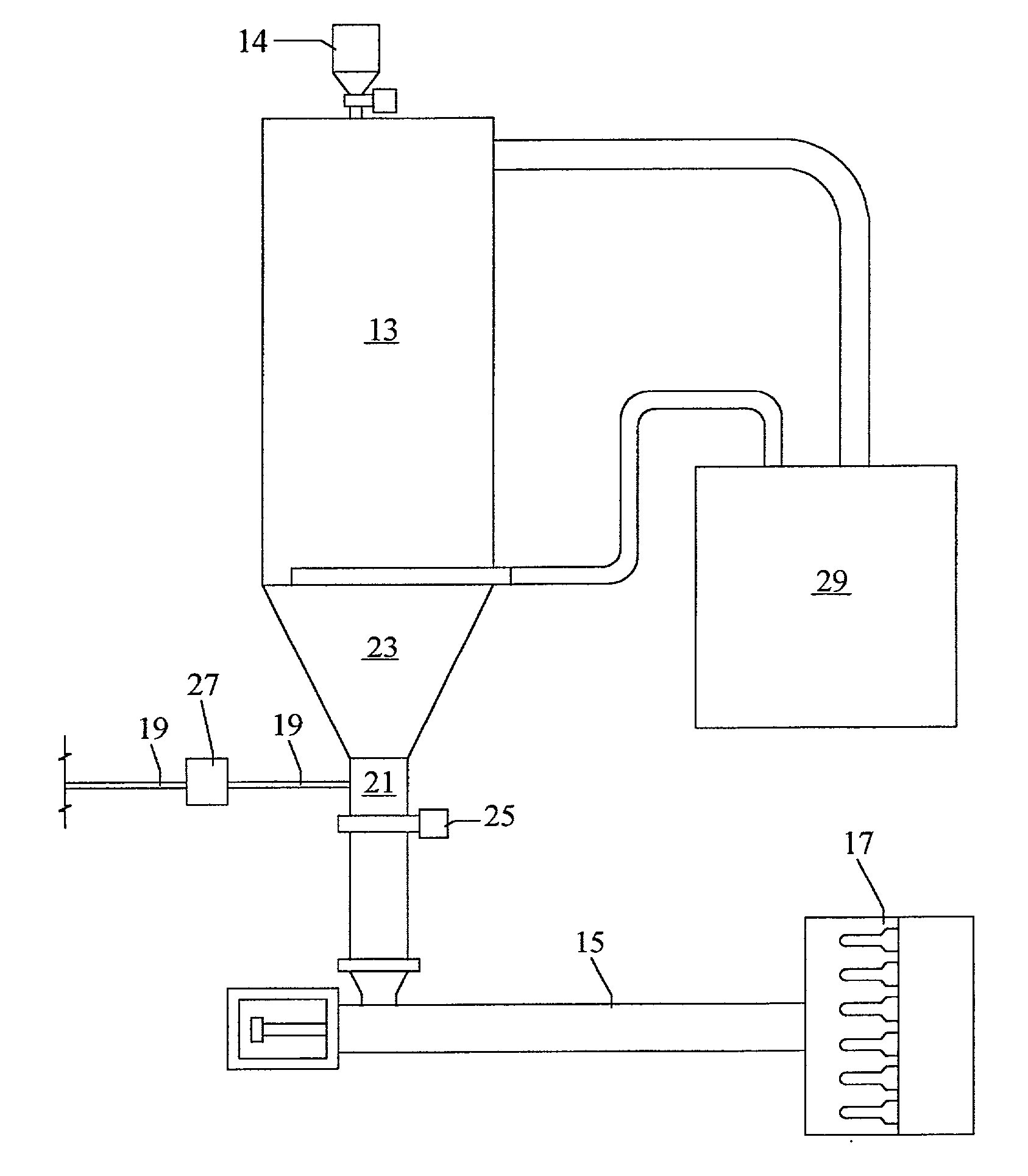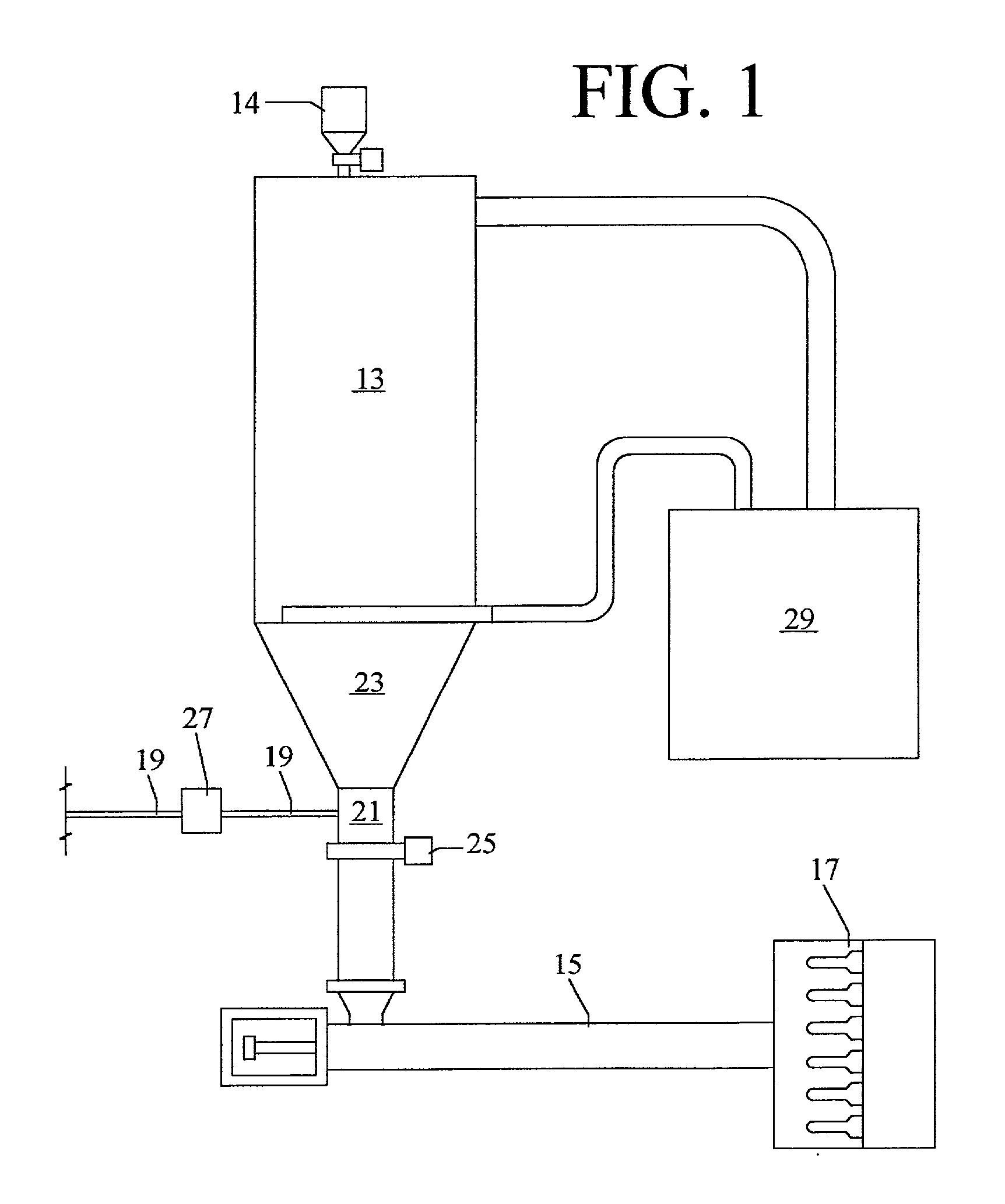Method of making an improved preform
a preform and improved technology, applied in the field of making an improved preform, can solve the problems of substantially displacement and oxygen-depleted atmosphere, and achieve the effects of ensuring the quality of the resulting preform, reducing the oxygen level, and consuming more inert gas
- Summary
- Abstract
- Description
- Claims
- Application Information
AI Technical Summary
Benefits of technology
Problems solved by technology
Method used
Image
Examples
Embodiment Construction
[0023] An initial inventory of about 6600 pounds (3.0 metric tons) of commercial bottle grade PET resin was loaded into a Piovan T3000IX drying hopper and dried at 170.degree. C. with a residence time of about 4 hours. After drying, the hot dried resin was fed into a Husky G500PET P100 / 120 E120 injection molding machine with 32 mold cavities, which was used to produce roughly 1500 lb / hr (680 kg / hr) of molded preforms for beverage bottles. Two separate production runs were conducted, one without nitrogen injection (i.e. ambient air in the hopper and downstream equipment), and the other with nitrogen injection to obtain an average drying hopper oxygen concentration of 15.1 volume percent. For each run, samples were collected of: (1) the cold resin (from storage), (2) the hot, dried resin leaving the drying hopper, (3) preforms made from the dried resin, and (4) bottles made from the preforms. The bottle were manufactured using a conventional Sidel cold blowing method, but nitrogen gas...
PUM
| Property | Measurement | Unit |
|---|---|---|
| temperature | aaaaa | aaaaa |
| temperature | aaaaa | aaaaa |
| temperature | aaaaa | aaaaa |
Abstract
Description
Claims
Application Information
 Login to View More
Login to View More - R&D
- Intellectual Property
- Life Sciences
- Materials
- Tech Scout
- Unparalleled Data Quality
- Higher Quality Content
- 60% Fewer Hallucinations
Browse by: Latest US Patents, China's latest patents, Technical Efficacy Thesaurus, Application Domain, Technology Topic, Popular Technical Reports.
© 2025 PatSnap. All rights reserved.Legal|Privacy policy|Modern Slavery Act Transparency Statement|Sitemap|About US| Contact US: help@patsnap.com


